6 Best Resistance Band Quad Exercises: For Huge Legs
1. Resistance Band Squats
Resistance band squats are a great way to strengthen the legs while doing a little cardio. The first thing to do is to choose an appropriate color of the resistance band depending on the resistance that the individual finds manageable.
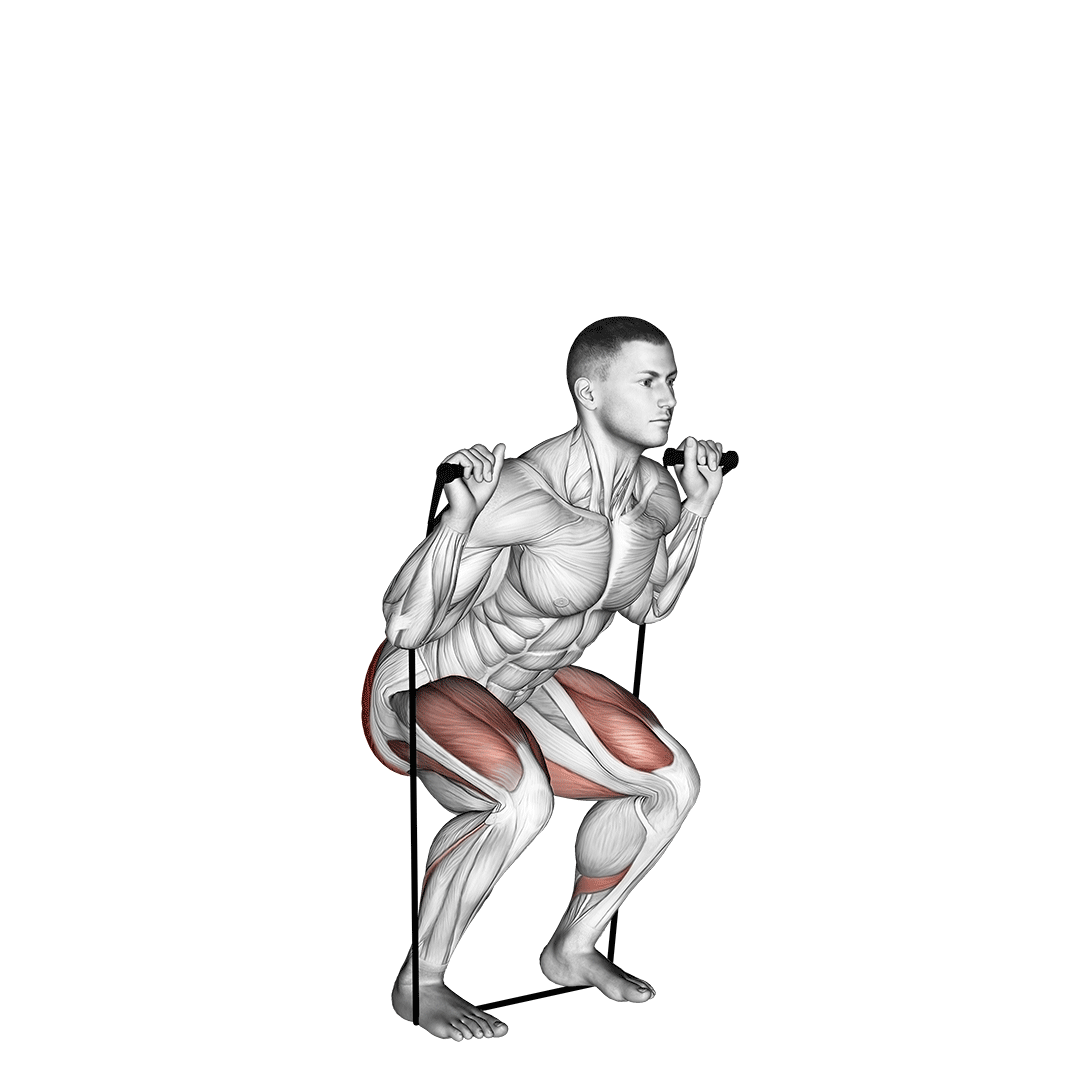
To perform squats with a resistance band, start with feet shoulder-width apart, knees bent, and toes pointed forward.
The band is placed under the feet and the other end is pulled up by the hands at shoulder height level. Keep the core tight and back straight, and slowly squat down by bending at the hips and knees until a full squat is achieved.
To finish one repetition, slowly stand up again by extending the knees and hips and returning to the starting position. Repeat this motion for the desired number of reps to complete a set.
2. Resistance Band Deadlifts
Lack of weight equipment will not hinder an individual in performing deadlifts as long as a resistance band is available to use. Deadlifts, with the help of a resistance band, are capable of offering similar benefits as a traditional deadlift in the comfort of an individual’s home.
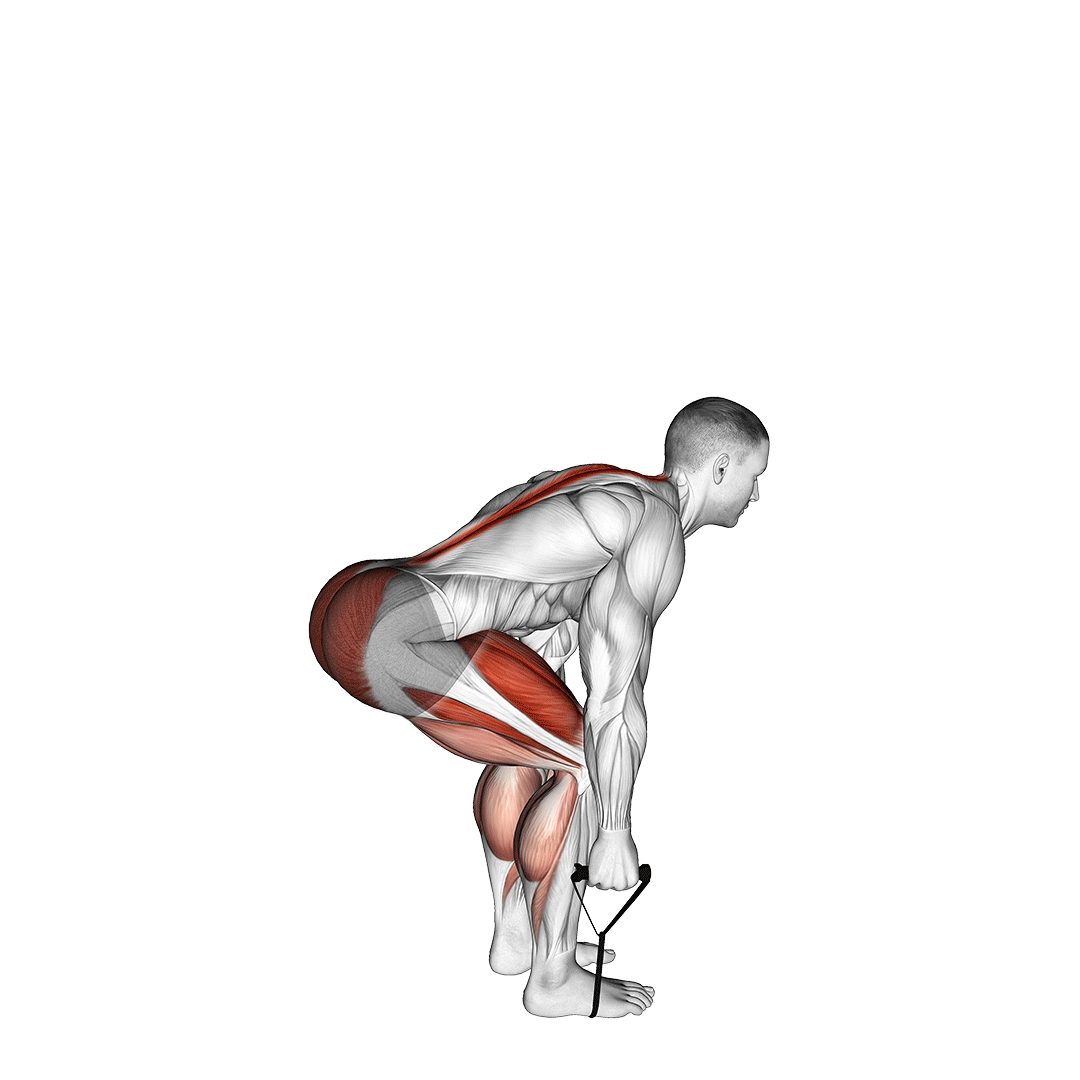
To perform, stand with feet at hip-width apart while stepping on a long resistance band. Use the hands to grab on both ends of the resistance band by slightly bending the knees and hinging the hips.
Keep the core engaged and the back straight even while reaching down to grab on the band. Let the hip do most of the work to pull the resistance band upward by pushing the hips forward to make the body erect.
Slowly bend the torso again by hinging at the hips and slightly bending the knees to return to the starting position. All movements must be performed in a controlled manner to get the most out of the exercise. Repeat this motion for the desired number of reps to complete a single set.
3. Banded Kneeling Leg Extension
The kneeling leg extension is a bodyweight activity that is a variation of the typical knee extension exercise which is usually done with a machine to target the quadriceps femoris muscle. The use of a resistance band for this exercise is for progression when the workout becomes too easy.
Tie one end of a resistance band on a pole or any stable object such as a machine. The other end of the band must be looped on the hips facing opposite the other end, where the pull must be felt at the front of the hips. Assume starting position by kneeling with the knees hip-distance apart, keeping the body tall, the core and legs engaged, and the hands on the hips.
Maintaining the back in neutral extension and hips extended, progressively tilt the body back until the buttocks are a few inches away from the heels. Return to the starting position by engaging the quads and extending at the knees. Repeat for the desired number of repetitions until a set is completed.
4. Resistance Band Seated Leg Extensions
Banded seated leg extensions require the leg to be extended at the knee joint unilaterally to avoid muscle imbalance. The performance of this exercise requires only two things: a chair and a resistance band.
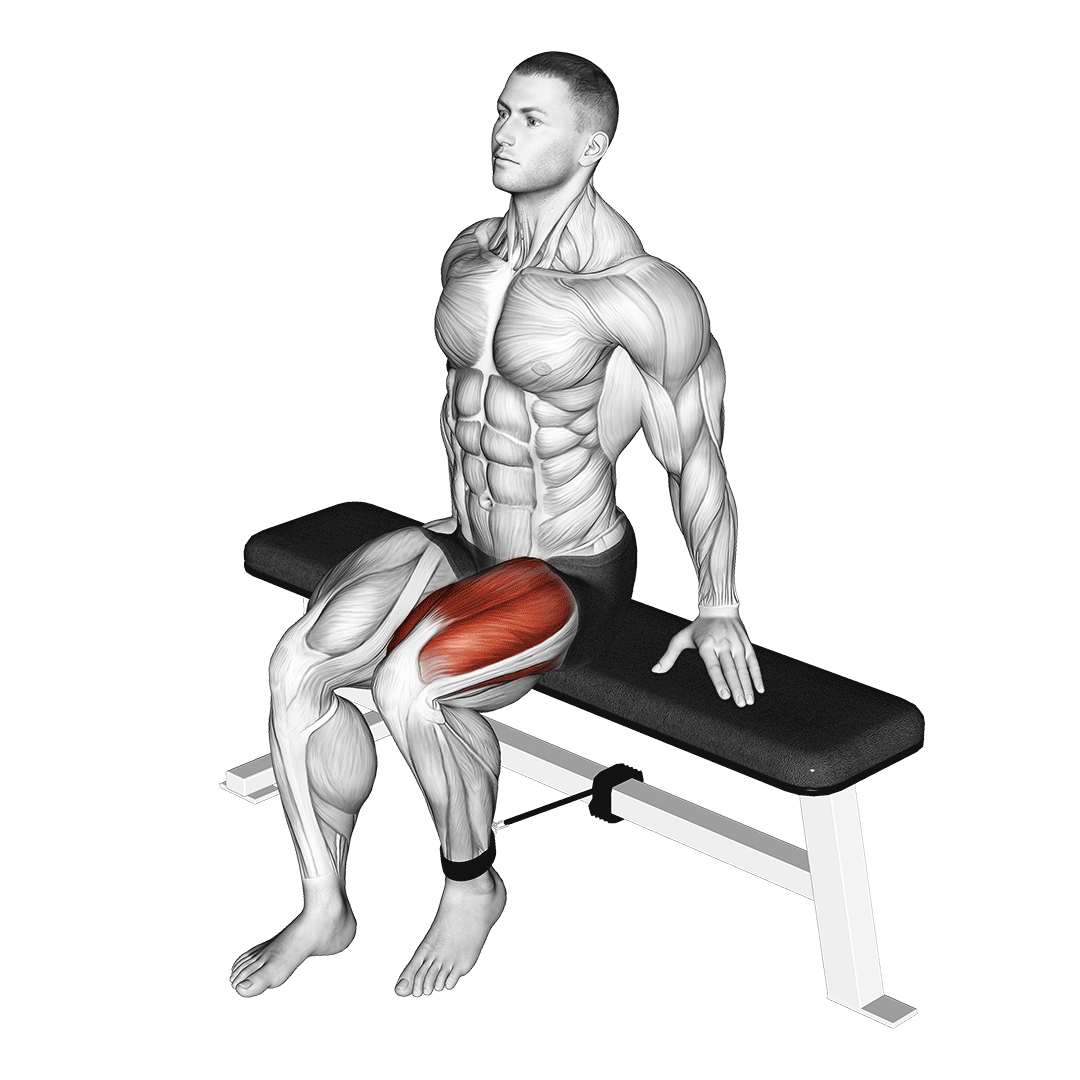
To perform, sit on a chair, then tie one end of the band on one of the chair’s legs while the other end is looped around one foot. Maintain proper sitting posture, keeping the back in neutral extension at all times. Straighten the knee until it is fully extended, then in a controlled manner, slowly lower it back to return to starting position.
Repeat this motion for the desired number of reps, then do the same motion for the other leg by transferring the resistance band to the opposite leg of the chair and foot as well.
5. Resistance Band Jump Squats
Resistance band jump squats are a great way to help an individual train more explosively, improve athletic performance, increase speed, and increase vertical jump.
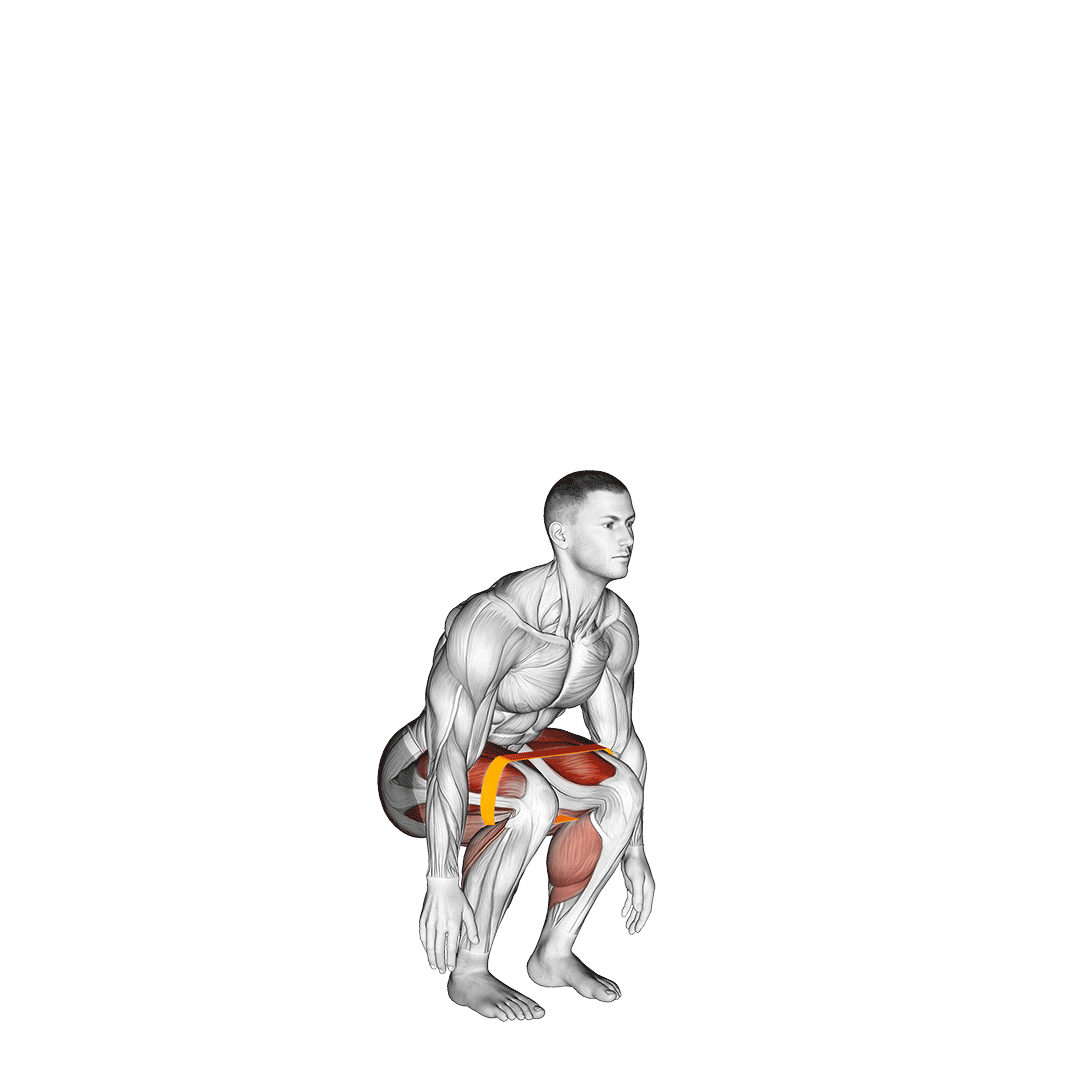
Get into position by standing with the feet shoulder-width apart with a resistance band wrapped around the quadriceps. Keep the core engaged and the back straight before getting into a squat position by bending the knees and hips.
While descending to a squat, throw the hands back. Jump up explosively, and at the same time, propel the arms forward and upward to create momentum. As soon as the individual lands on the floor, the squat position is retained to perform a jump again.
6. Resistance Band Leg Press
Resistance band leg press is a great way to work the quads, but not only does this target the quads this exercise also works the entire leg muscles such as the hamstrings, glutes, and even calves. The exercise can be done in a unilateral fashion or bilaterally.
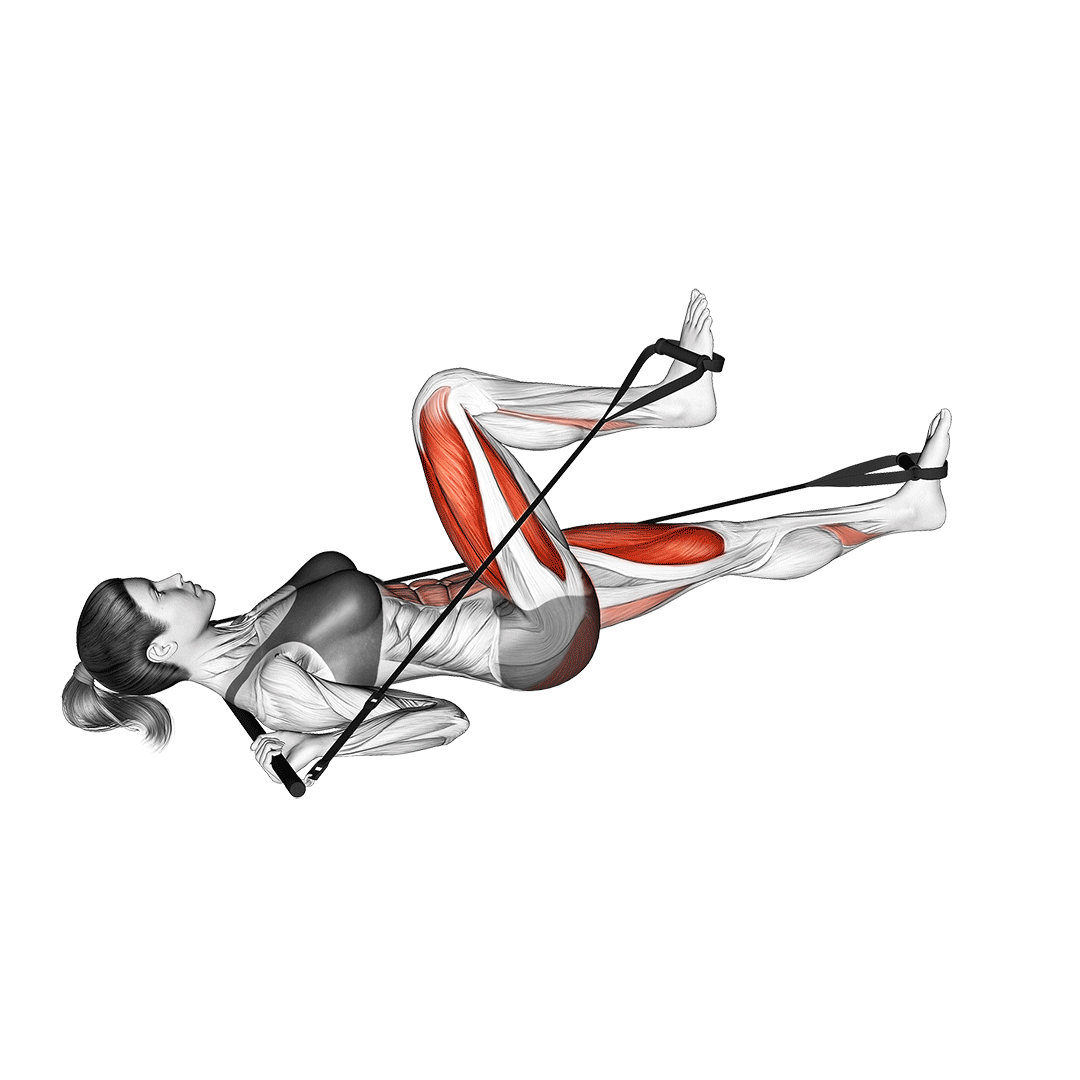
Lie down on the floor or a soft yoga mat. Grab a resistance band with both hands at each end of the band. Bend the knees so that the thighs are at a 90-degree angle against the body.
Place the resistance band beneath the feet and then pull it with the hands by bending the elbows until it touches the individual’s chest while maintaining the angle of the thighs to the body. Fully straighten the legs and hips by pushing on the resistance band forward. Slowly return to the starting position by bending the knees and hips again in a controlled manner.
Disadvantages of Using Resistance Bands
Resistance bands have a lifetime; for physical therapy use, it is recommended to replace the bands every 1-2 months, but for personal use, they can last anywhere from 6 to 10 months. This is because resistance bands can break due to normal wear and tear from use.
The quality of the band determines its lifespan. Depending on the quality, bands can break mid-activity and may cause injury when the band snaps. It may rebound and hit the eyes or cause sudden movements that may bring about injuries such as sprains and strains.
Furthermore, it is particularly difficult to quantify gains when using resistance bands. Resistance bands are color-coded according to the amount of resistance they provide; for example, the yellow resistance band provides the lightest resistance, while the blue resistance band provides heavy resistance.
It is difficult to determine the exact resistance that the band provides for the individual because the tension of the band may increase when stretched to a certain point during the exercise.
References
1. Gooyers CE, Beach TAC, Frost DM, Callaghan JP. The influence of resistance bands on frontal plane knee mechanics during body-weight squat and vertical jump movements. Sports Biomechanics. 2012;11(3):391-401. doi:10.1080/14763141.2012.654503
2. Nyberg A, Hedlund M, Kolberg A, Alm L, Lindström B, Wadell K. The accuracy of using elastic resistance bands to evaluate muscular strength. European Journal of Physiotherapy. 2014;16(2):104-112. doi:10.3109/21679169.2014.889746
3. Gullett JC, Tillman MD, Gutierrez GM, Chow JW. A biomechanical comparison of back and front squats in healthy trained individuals. J Strength Cond Res. 2009 Jan;23(1):284-92. doi: 10.1519/JSC.0b013e31818546bb. PMID: 19002072.
4. Cormie P, McCaulley GO, McBride JM. Power versus strength-power jump squat training: influence on the load-power relationship. Med Sci Sports Exerc. 2007 Jun;39(6):996-1003. doi: 10.1097/mss.0b013e3180408e0c. PMID: 17545891.
